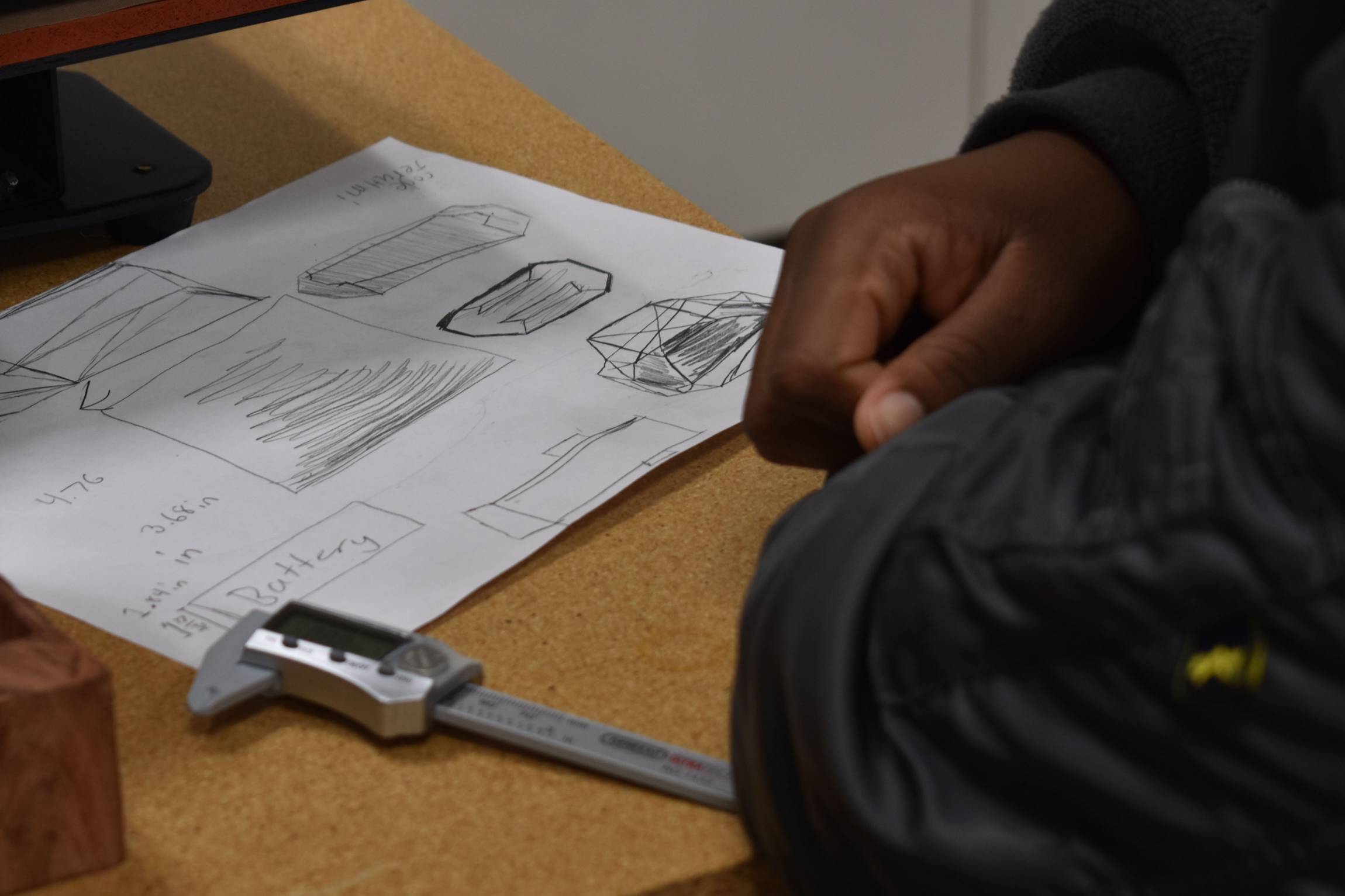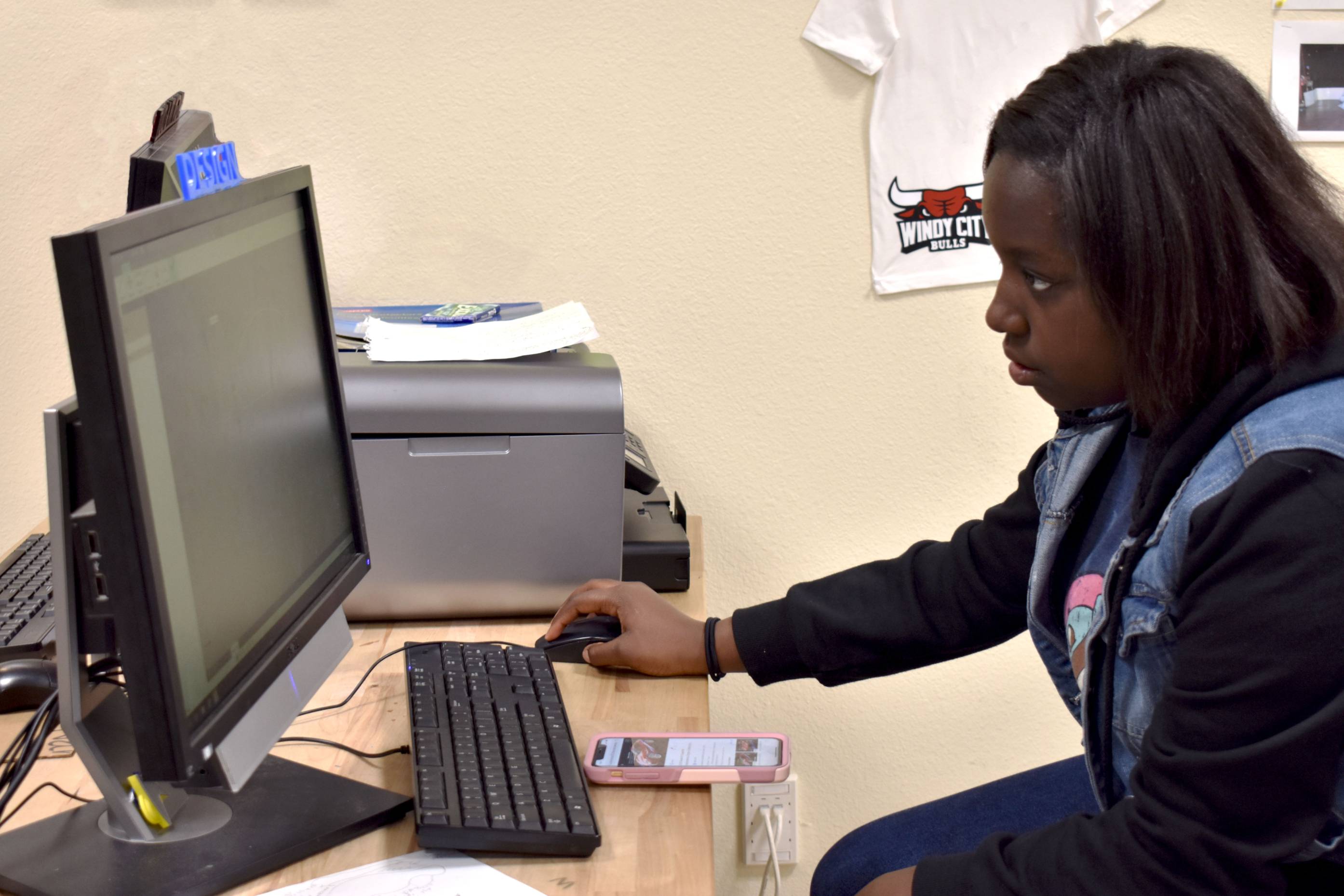Bobcat Made welcomes young makers
Bobcat Made welcomes young makers
Emma Carberry | March 14, 2019
On any given day, you will find a different adventure in Bobcat Made, the collaborative maker space shared between the College of Education and the College of Science and Engineering. The free space is used by 500 to 750 Bobcats each semester and offers students a variety of tools to create anything from keychains to custom graduation caps using embroidery machines, 3D printers, laser engravers and more.
However, this February, the space welcomed an audience it doesn’t usually see – San Antonio’s National Society of Black Engineers (NSBE) Jr. chapter. This group of high school students visited the maker space to work on their project for NSBE Jr.’s TEN80 Racing Challenge. The challenge asks students to rebuild a model radio-controlled car with improved parts. In the case of the San Antonio team, this improvement included adding an extra battery to the car’s chassis and creating a more aerodynamic roof.

Their car, which can reach a speed of around 30 miles-per-hour will race at the annual TEN80 competition, which will take place close to home this year at Texas A&M University in April. The competitive spirits will be in full swing for this team, whose members won first place in both the TEN80 competition and the NSBE national competition last year as middle-schoolers.
This is the team’s second year visiting the Bobcat Made space. Their first visit came after a connection was made during a maker education integration workshop series that Dr. Shaunna Smith hosted last year. Dr. Smith is an associate professor in the Curriculum and Instruction Department, as well as the Co-Director of the Bobcat Made space. After attending her workshop, Dr. Paul Mencke, Curriculum and Instruction lecturer, realized that Bobcat Made would be a valuable resource for the NSBE Jr. team, of which his son was a member.
Community involvement was always part of the vision Dr. Smith and Bobcat Made co-director Dr. Kimberly Talley, assistant professor in the College of Science and Engineering had for the space. “Not only do we want to give free access to our university students to be able to use Bobcat Made,” Smith shared, “but we also want to provide outreach to the community.” So, the partnership made immediate sense to the pair. After the NSBE Jr. team visited once, Smith says, everyone enjoyed it so much that Bobcat Made welcomed them back to work on their design for this year’s competition.


Smith also emphasizes the fact that a new audience in the space is beneficial for the Texas State students who volunteer there. On a typical day, these students are working with their peers, but they “take on a completely different viewpoint when they’re teaching and training those who are younger than them,” Smith says. She adds that the Bobcat Made volunteers are pleasantly surprised by the amount of knowledge the high schoolers bring with them and are excited to show them some of the advanced technologies in the maker space. This was evident during the team’s visit, as Bobcat Made volunteer and Texas State mechanical engineering major Clare Collins showed one of the NSBE Jr. team members how to model the wind speed around the redesigned car roof on the computer so that she would have an idea of how it would perform before she created it. The new audience also gives the volunteers a chance to talk through concepts that they’re learning in their coursework and to discuss some of the more technical aspects of the machinery in Bobcat Made.
The partnership also helps the NSBE Jr. participants to begin forging future pathways in STEM. Smith stresses that these students have an advantage when it comes to STEM career tracks because they are already familiar with engineering. So, the next step, Smith says, is to “bring them onto a university campus and show them more advanced tools that can help them push their process and push their possibilities.” According to Smith, the ability to see oneself in an engineering student or an engineer is an important part of the identity work that goes into broadening the STEM field. She takes great pride in the fact that the Bobcat Made volunteers reflect the diversity of the Texas State student body and attributes that to the fact that it is a collaborative space, not isolated to one program on campus.
|
"Not only do we want to give free access to our university students to be able to use Bobcat Made, but we also want to provide outreach to the community." -Dr. Shaunna Smith, Bobcat Made co-director/Curriculum & Instruction associate professor |

Smith and Talley, along with Dr. Araceli Ortiz, director of the College of Education’s LBJ Institute for STEM Education and Research have seen the potential for maker spaces to make a difference in the lives of school-age children for several years. As maker spaces became more integrated into K-12 schools, the three pursued a National Science Foundation grant that would allow for students across disciplines to benefit from an on-campus maker space. And so, Bobcat Made was born as a space for all Texas State students to become more familiar with technologies that are usually limited to science and engineering fields. The grant is currently in its fourth and final year, although Smith says the space will continue after the grant expires. In its four years, the space seems to be meeting its goals - Smith says the team has been “excited to see significant changes [in engineering design self-efficacy], especially in education students who come into the space.”
Bobcat Made’s reach has been large and continues to grow. On April 27, as the NSBE Jr. team begins their competition, Smith’s Educational Technology graduate students will host a free Educational Technology conference on the Texas State campus. The conference is open to all local educators and will include Bobcat Made workshops for attendees. For more information on the conference, visit their website.